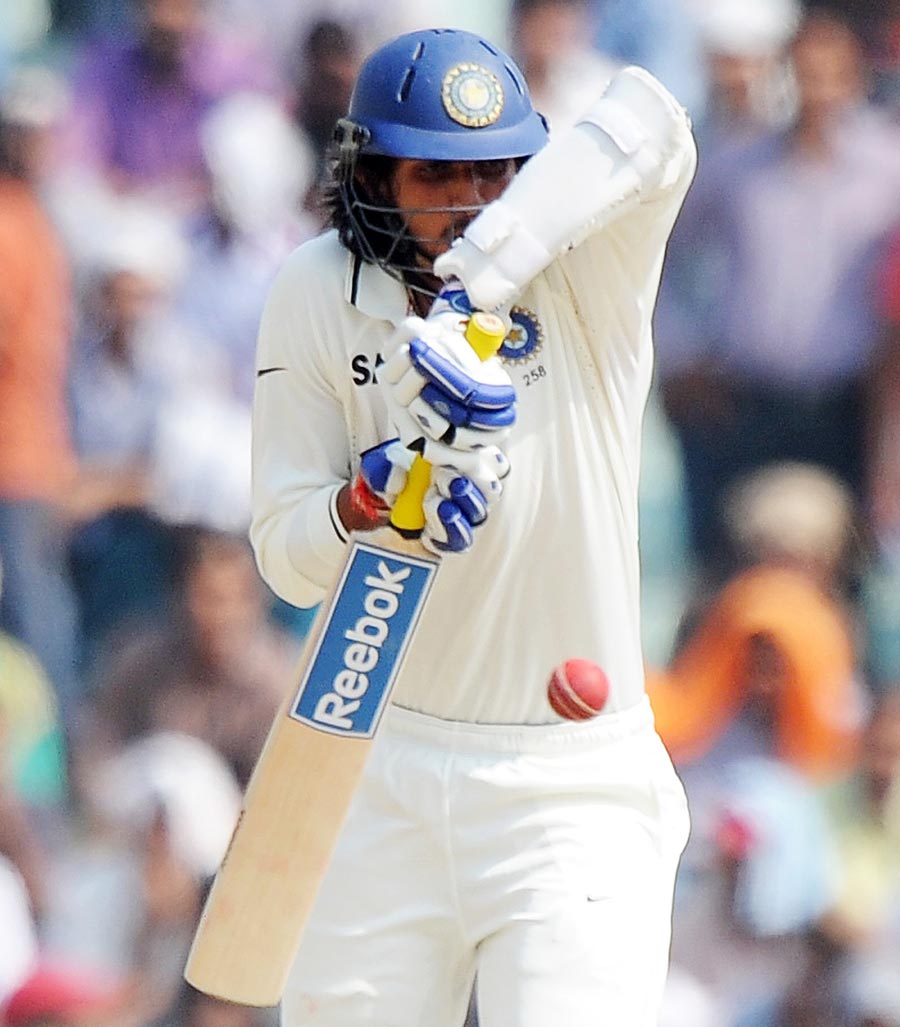A single overwhelming mood predominates when I think of Laxman's innings many of which I have watched over the years - unrestrained joy. One often hears commentators quipping about certain batsmen: "He makes batting look so easy" or "He seems to be batting on a good wicket while others are batting on a minefield." These quips true every other time in Laxman's case. He belongs to and in the ilk of batsmen, which includes among others Mark Waugh and Mahela Jayawardene, whose stroke play is supremely rich in expression, reminding us of art for art's sake, of a bygone era when this was a game free from its professional trappings, and of the possibilities of life. It is little surprise then that Laxman often looked imperious and carefree one-day, and impulsive and careless the next. I still remember that there was a time when he used to stroke the prettiest thirties before feathering an edge through to the keeper of a fairly innocuous delivery. The fact that Laxman outwitted his own nonchalance, without sacrificing the spontaneity or the blitheness of his craft, to become one of the mainstays of the Indian batting line-up speaks greatly of his temperament.
The breeze that Laxman's bat exudes has given me many wonderful memories, some more likely to endure than others. His last bow in Australia might not have contributed even a single half century, but when I think of cricket in Australia my mind will probably go back to Laxman's drives, short-arm pulls, leg glances, Azhar-esque flicks and deft dabs which send the ball singing to the boundary, dispersing en route the seagulls enjoying a day out on the lush green outfield. I will also recall with fondness and respect the way he batted in 2009 and 2010, pulling of a physically demanding run chase with a classy hundred at Colombo, ruining Australia's party with an adrenaline-defying undefeated 73 in a humdinger at Mohali, and setting up a famous victory with a statuesque 96 in Durban - the Waterloo of India's 100 and 66 all-out in 1996 - against Dale Steyn & Co. If Laxman's legacy is to be defined, the three aforementioned innings and the 281 at Kolkata provide a common thread: he didn't battle pressure, he batted it. (And pressure or not, he made runs whenever he went out to bat at the Eden Gardens like Azharuddin did before him! And it was a sight to see Laxman appear bamboozled every time he got out, bowled).
As a slip fielder, Laxman appeared almost somnolent making it is easy to take his contribution for granted (may be they should also have nicknamed him Very Very Simple). But good close-in fieldsmen are like good wicket keepers in that their best work is done with quiet sufficiency; when they grass a couple you never hear the end of it. Laxman was so clinical in his catching like the Marks, Waugh and Taylor, that he made taking tricky catches appear like another day at the office. In fact, I cannot remember the last time Laxman dropped a catch even as Dravid, another brilliant catcher, plucked rippers and dropped sitters regularly during the last two years of his career. The next time I watch an India playing Test cricket one thing will, perhaps, more take time to sink in than the batting line- up which will be 21000 Test runs poorer - a strange slip cordon.
Winding up, I admit that the timing of Laxman's retirement surprises me just the way the timing behind his strokes did. Having been picked for the upcoming series versus New Zealand and having a final chance to play at his home ground at Uppal, one would have thought that he would play out the series. But as Harsha Bhogle has tweeted, "[It] requires a very special man to turn his back on a grandstand end and accept the end has come." Many have said this before, and I will for my part say it again: it has been a privilege to have grown up in an era that has seen the likes of Tendulkar, Dravid, Laxman, Kumble and Ganguly. Mukul Kesavan said on CNN-IBN after Dravid's retirement that this may be the beginning of the end of Test cricket itself in India. Sports fans are suckers for nostalgia and doomsday theories but Kesavan's warning does seem ominous given the goings-on in Indian cricket. With Laxman now gone, Tendulkar alone remains from an era of Indian cricket which he himself heralded, and which is now in its twenty-third year. Soon, the curtains will come down on it for good.

